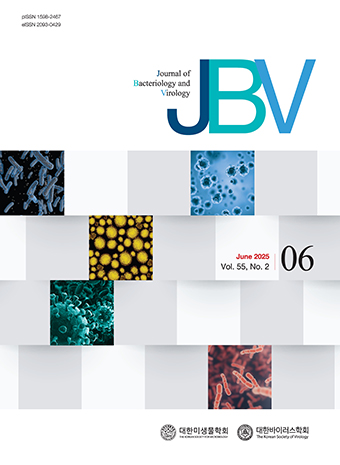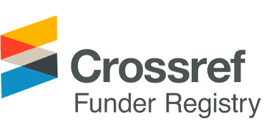Original Article
Ewing WH. Edwards and Ewing's Identification of Enterobacteriaceae. 4th ed. New York: Elsevier Science Publishing; 1986. p.181-318.
McDaniel TK, Jarvis KG, Donnenberg MS, Kaper JB. A genetic locus of enterocyte effacement conserved among diverse enterobacterial pathogens. Proc Natl Acad Sci U S A. 1995;92(5):1664-1668.
10.1073/pnas.92.5.16647878036PMC42580Nataro JP, Kaper JB. Diarrheagenic Escherichia coli. Clin Microbiol Rev. 1998;11(1):142-201.
10.1128/CMR.11.1.1429457432PMC121379Gyles CL. Escherichia coli cytotoxins and enterotoxins. Can J Microbiol. 1992;38(7):734-746.
10.1139/m92-1201393838Nataro JP, Kaper JB, Robins-Browne R, Prado V, Vial P, Levine MM. Patterns of adherence of diarrheagenic Escherichia coli to HEp-2 cells. Pediatr Infect Dis J. 1987;6(9):829-831.
10.1097/00006454-198709000-000083313248Finlay BB, Rosenshine I, Donnenberg MS, Kaper JB. Cytoskeletal composition of attaching and effacing lesions associated with enteropathogenic Escherichia coli adherence to HeLa cells. Infect Immun. 1992;60(6):2541-2543.
10.1128/iai.60.6.2541-2543.19921587620PMC257194Park S, Kim SH, Kee HY, Seo JJ, Ha DR, Cho SH, et al. Enterotoxigenic Escherichia coli outbreak in a high school. Infect Chemother. 2006;38:30-38.
Jin YH, Seung HJ, Oh YH, Jung JH, Jeon SJ, Lee JK, et al. Epidemiological relationship of enterotoxigenic Escherichia coli and enteroaggregative E. coli isolated from patients with diarrhea in Seoul. J Bacteriol Virol. 2013;43(1):37-44.
10.4167/jbv.2013.43.1.37Qadri F, Svennerholm AM, Faruque AS, Sack RB. Enterotoxigenic Escherichia coli in developing countries: epidemiology, microbiology, clinical features, treatment, and prevention. Clin Microbiol Rev. 2005;18(3):465-483.
10.1128/CMR.18.3.465-483.200516020685PMC1195967Vial PA, Robins-Browne R, Lior H, Prado V, Kaper JB, Nataro JP,et al. Characterization of enteroadherent-aggregative Escherichia coli, a putative agent of diarrheal disease. J Infect Dis. 1988;158(1):70-79.
10.1093/infdis/158.1.702899125Savarino SJ, Fox P, Deng Y, Nataro JP. Identification and characterization of a gene cluster mediating enteroaggregative Escherichia coli aggregative adherence fimbria I biogenesis. J Bacteriol. 1994;176(16):4949-4957.
10.1128/jb.176.16.4949-4957.19947914189PMC196332Brenner DJ, Fanning GR, Miklos GV, Steigerwalt AG. Polynucleotide sequence relatedness among Shigella species. Int J Syst Bacteriol. 1973;23(1):1-7.
10.1099/00207713-23-1-1Ménard R, Dehio C, Sansonetti PJ. Bacterial entry into epithelial cells: the paradigm of Shigella. Trends Microbiol. 1996;4(6):220-226.
10.1016/0966-842X(96)10039-18795157Pupo GM, Lan R, Reeves PR. Multiple independent origins of Shigella clones of Escherichia coli and convergent evolution of many of their characteristics. Proc Natl Acad Sci U S A. 2000;97(19):10567-10572.
10.1073/pnas.18009479710954745PMC27065Heinemann JA, Ankenbauer RG, Amábile-Cuevas CF. Do antibiotics maintain antibiotic resistance? Drug Discov Today. 2000;5(5):195-204.
10.1016/S1359-6446(00)01483-510790263Ahmed AM, Motoi Y, Sato M, Maruyama A, Watanabe H, Fukumoto Y, et al. Zoo animals as reservoirs of gram-negative bacteria harboring integrons and antimicrobial resistance genes. Appl Environ Microbiol. 2007;73(20):6686-6690.
10.1128/AEM.01054-0717720829PMC2075039Lanz R, Kuhnert P, Boerlin P. Antimicrobial resistance and resistance gene determinants in clinical Escherichia coli from different animal species in Switzerland. Vet Microbiol. 2003;91(1):73-84.
10.1016/S0378-1135(02)00263-812441233Kim JG. Influence of climate factors on the occurrence of pathogenic Escherichia coli food poisoning in Korea. J Environ Health Sci. 2020;46(3):353-358.
WHO. Shiga Toxin-producing Escherichia coli (STEC) and Food: Attribution, Characterization and Monitoring: Report. World Health Organization, 2018.
Trabulsi LR, Keller R, Tardelli Gomes TA. Typical and atypical enteropathogenic Escherichia coli. Emerg Infect Dis. 2002;8(5):508-513.
10.3201/eid0805.01038511996687PMC2732489Yun YS, Kim NO, Hong SH, Chun JH, Hwang KJ. The prevalence of pathogenic Escherichia coli isolated by the enteric pathogens active surveillance network (Enter-Net), 2010-2019. Pub Health Wkly Rep. 2020;13:2860-2870.
McGowan JE Jr. Economic impact of antimicrobial resistance. Emerg Infect Dis. 2001;7(2):286-292.
10.3201/eid0702.01022811294725PMC2631707Price J, Ekleberry A, Grover A, Melendy S, Baddam K, McMahon J, et al. Evaluation of clinical practice guidelines on outcome of infection in patients in the surgical intensive care unit. Crit Care Med. 1999;27(10):2118-2124.
10.1097/00003246-199910000-0000710548192Kim KA, Yong KC, Jeong JA, Huh JW, Hur ES, Park SH, et al. Analysis of Epidemiological Characteristics, PFGE Typing and Antibiotic Resistance of Pathogenic Escherichia coli Strains Isolated from Gyeonggi-do. Kor J Microbiol. 2014;50(4):285-295.
10.7845/kjm.2014.4057Kim JY, Jeon SM, Kim H, Lim N, Park MS, Kim SH. Resistance to Fluoroquinolone by a Combination of Efflux and Target Site Mutations in Enteroaggregative Escherichia coli Isolated in Korea. Osong Public Health Res Perspect. 2012;3(4):239-244.
10.1016/j.phrp.2012.11.00224159520PMC3747663Aslani MM, Alikhani MY, Zavari A, Yousefi R, Zamani AR. Characterization of enteroaggregative Escherichia coli (EAEC) clinical isolates and their antibiotic resistance pattern. Int J Infect Dis. 2011;15(2):e136-139.
10.1016/j.ijid.2010.10.00221130676Kennedy CA, Walsh C, Karczmarczyk M, O'Brien S, Akasheh N, Quirke M,et al. Multi-drug resistant Escherichia coli in diarrhoeagenic foals: Pulsotyping, phylotyping, serotyping, antibiotic resistance and virulence profiling. Vet Microbiol. 2018;223:144-152.
10.1016/j.vetmic.2018.08.00930173740Bradford PA. Extended-spectrum beta-lactamases in the 21st century: characterization, epidemiology, and detection of this important resistance threat. Clin Microbiol Rev. 2001;14(4):933-951.
10.1128/CMR.14.4.933-951.200111585791PMC89009Cantón R, González-Alba JM, Galán JC. CTX-M Enzymes: Origin and Diffusion. Front Microbiol. 2012;3:110.
10.3389/fmicb.2012.0011022485109PMC3316993Bevan ER, Jones AM, Hawkey PM. Global epidemiology of CTX-M β-lactamases: temporal and geographical shifts in genotype. J Antimicrob Chemother. 2017;72(8):2145-2155.
10.1093/jac/dkx14628541467Kim YA, Kim H, Seo YH, Park GE, Lee H, Lee K. Prevalence and Molecular Epidemiology of Extended-Spectrum-β-Lactamase (ESBL)-Producing Escherichia coli From Multiple Sectors of the Swine Industry in Korea: A Korean Nationwide Monitoring Program for a One Health Approach to Combat Antimicrobial Resistance. Ann Lab Med. 2021;41(3):285-292.
10.3343/alm.2021.41.3.28533303713PMC7748096- Publisher :The Korean Society for Microbiology and The Korean Society of Virology
- Publisher(Ko) :대한미생물학회‧대한바이러스학회
- Journal Title :JOURNAL OF BACTERIOLOGY AND VIROLOGY
- Volume : 54
- No :2
- Pages :155-166
- Received Date : 2024-05-02
- Revised Date : 2024-06-13
- Accepted Date : 2024-06-18
- DOI :https://doi.org/10.4167/jbv.2024.54.2.155



 JOURNAL OF BACTERIOLOGY AND VIROLOGY
JOURNAL OF BACTERIOLOGY AND VIROLOGY










